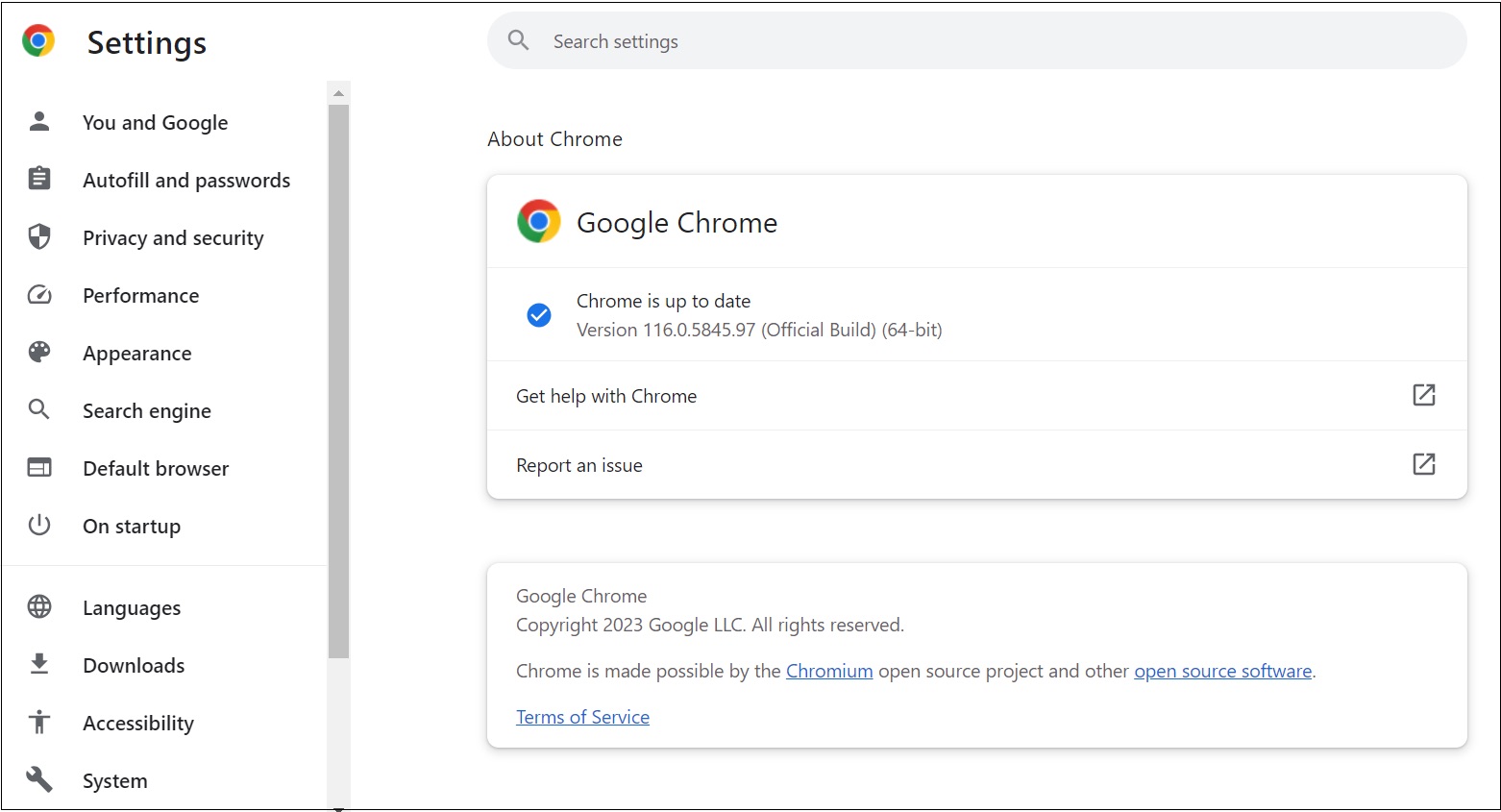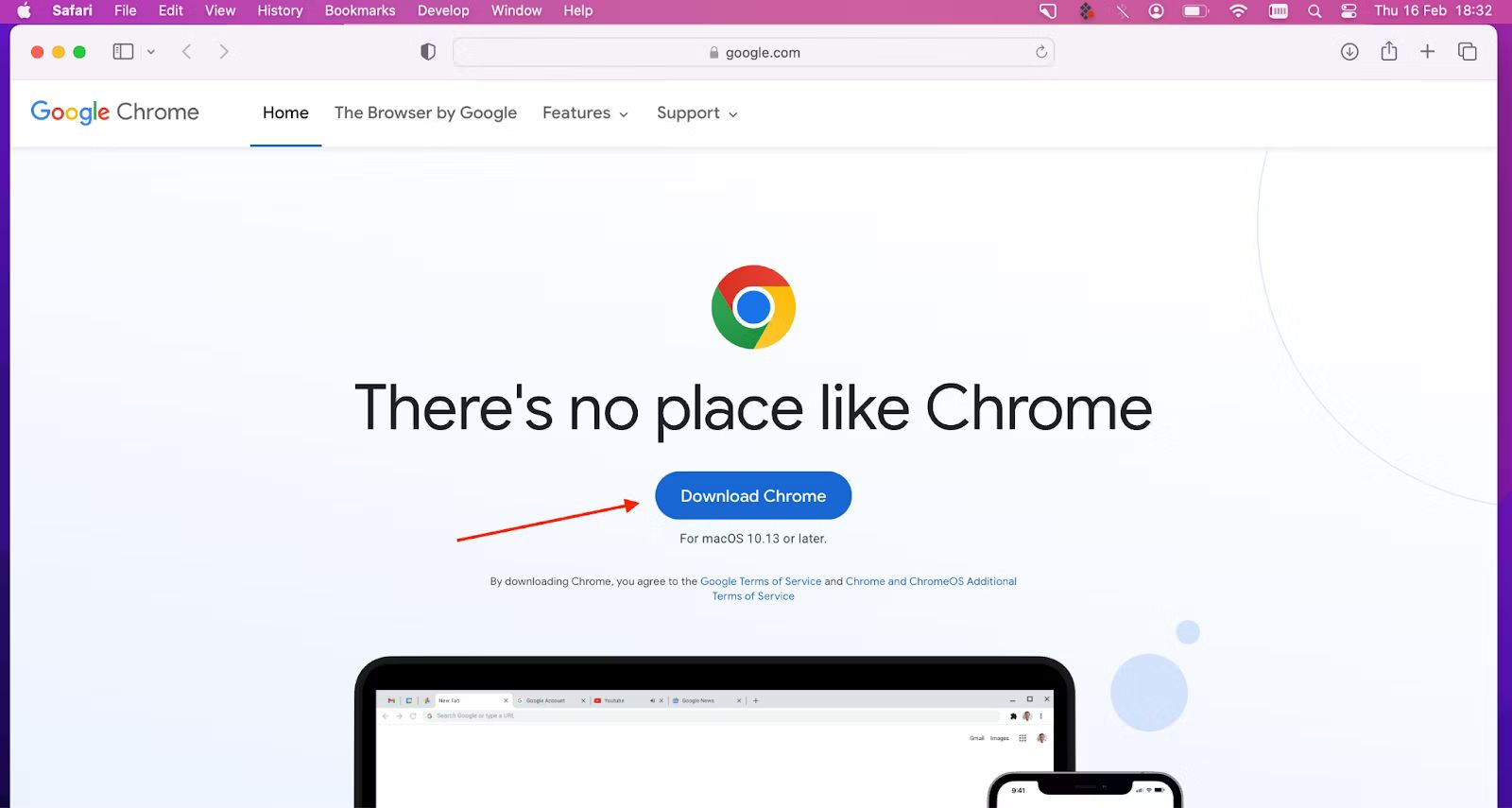Introduction
Google Chrome is widely regarded as one of the most popular web browsers in the world, offering users a seamless and fast browsing experience. However, if you find that your downloads are taking longer than expected, there are several steps you can take to optimize Chrome’s download speed. By implementing these simple tweaks, you can make Google Chrome download faster and increase your productivity online.
In this article, we will explore various methods to boost Chrome’s download speed. Whether you need to download large files, stream videos, or simply want a faster browsing experience, these tips will help you optimize Chrome’s performance. Let’s delve into the different techniques that can make your downloads lightning-fast.
Before we begin, it’s important to note that the effectiveness of these methods may vary depending on your internet connection speed, computer specifications, and other factors. However, implementing these optimizations is generally beneficial for most users and can significantly enhance the download speed in Google Chrome.
Now, let’s get started and explore the different steps you can take to make Google Chrome’s download speed faster.
Clear the Cache
One of the simplest and most effective ways to improve the download speed in Google Chrome is by clearing the cache. The cache is a temporary storage area where the browser stores website data, such as images, files, and scripts, to speed up future visits to the same site. Over time, this cache can become cluttered and impact the browser’s performance, including download speed.
To clear the cache in Google Chrome, follow these steps:
- Open the Google Chrome browser.
- Click on the three-dot menu icon in the top-right corner of the browser window.
- Select “Settings” from the drop-down menu.
- Scroll down and click on “Advanced” to expand more options.
- Under the “Privacy and security” section, click on “Clear browsing data”.
- In the new window, select the time range for which you want to clear the cache. If you want to clear the cache entirely, choose “All time”.
- Make sure the checkbox for “Cached images and files” is selected.
- Click on the “Clear data” button to clear the cache.
After clearing the cache, you may notice an immediate improvement in the download speed in Google Chrome. This is because the browser no longer needs to retrieve data from the cluttered cache, allowing for a smoother and faster browsing experience.
It’s recommended to periodically clear the cache in Google Chrome to ensure optimal performance. You can also configure Chrome to automatically clear the cache on exit by going to the “Advanced” settings and enabling the option to “Clear cookies and site data when you quit Chrome”. This ensures that you always have a clean cache every time you start the browser.
Now that you have cleared the cache in Google Chrome, let’s move on to the next step to further optimize Chrome’s download speed.
Disable Unnecessary Extensions
Google Chrome offers a wide range of extensions that add functionality and enhance the browsing experience. However, having too many extensions active can significantly impact the download speed and overall performance of the browser. Disabling unnecessary extensions can help improve the download speed in Google Chrome.
Here’s how you can disable extensions in Google Chrome:
- Open the Google Chrome browser.
- Click on the three-dot menu icon in the top-right corner of the browser window.
- Select “More Tools” from the drop-down menu.
- Choose “Extensions” from the expanded menu.
- You will be directed to the “Extensions” page, where you will see a list of all installed extensions.
- Review the list and identify any extensions that you no longer use or need.
- To disable an extension, simply toggle off the switch next to it.
- Repeat this process for all the unnecessary extensions that you want to disable.
By disabling unnecessary extensions, you reduce the browser’s workload and free up system resources, which can result in faster download speeds. It’s important to note that disabling an extension does not uninstall it, so you can always re-enable it if needed.
In addition to disabling unnecessary extensions, it’s also a good idea to regularly review and remove any unused or outdated extensions from your Chrome browser. This ensures that you only have the extensions that are essential for your browsing needs, further optimizing the performance of Google Chrome.
Now that you have disabled the unnecessary extensions in Google Chrome, let’s explore other methods to improve the download speed.
Update Google Chrome
Keeping your Google Chrome browser up to date is crucial for optimal performance and security. Regular updates not only introduce new features but also fix bugs and improve the overall stability of the browser. Updating Google Chrome can also help improve the download speed, as newer versions often come with performance enhancements and optimizations.
Here’s how you can update Google Chrome to the latest version:
- Open the Google Chrome browser.
- Click on the three-dot menu icon in the top-right corner of the browser window.
- Hover over the “Help” option in the drop-down menu.
- Select “About Google Chrome”.
- A new tab will open, displaying the current version of Google Chrome.
- The browser will automatically check for updates and begin downloading them.
- Once the update is complete, click on the “Relaunch” button to restart the browser.
It’s recommended to always update to the latest version of Google Chrome to ensure that you are benefiting from the latest performance improvements and security patches. Outdated versions of the browser may have known issues that could impact download speed and overall browsing experience.
If you have automatic updates enabled, Google Chrome will automatically check for updates and install them in the background. However, if you prefer to manually update the browser, you can do so by following the steps mentioned above.
Now that you have updated Google Chrome to the latest version, let’s move on to the next step in optimizing the download speed.
Disable Hardware Acceleration
Hardware acceleration is a feature in Google Chrome that offloads certain tasks to your computer’s graphics card, resulting in improved performance for graphics-intensive applications. However, in some cases, hardware acceleration can cause issues and impact the download speed in Google Chrome. Disabling hardware acceleration can help resolve these issues and potentially improve the overall performance of the browser.
Here’s how you can disable hardware acceleration in Google Chrome:
- Open the Google Chrome browser.
- Click on the three-dot menu icon in the top-right corner of the browser window.
- Select “Settings” from the drop-down menu.
- Scroll down to the bottom and click on “Advanced” to expand more options.
- Under the “System” section, toggle off the switch next to “Use hardware acceleration when available”.
- Restart Google Chrome to apply the changes.
Disabling hardware acceleration reduces the load on your graphics card and can help improve the download speed in Google Chrome. It’s worth noting that disabling hardware acceleration may affect the performance of graphics-intensive applications, such as video streaming or online gaming. If you encounter any issues after disabling hardware acceleration, you can re-enable it using the same steps mentioned above.
Additionally, if you’re experiencing slow download speeds on a specific website or web application, you can try disabling hardware acceleration for that particular site. To do this, right-click on the page, select “Settings”, scroll down to the “System” section, and toggle off hardware acceleration.
Now that you have disabled hardware acceleration in Google Chrome, let’s explore other methods to enhance the download speed.
Use a Faster DNS Server
The Domain Name System (DNS) is responsible for translating domain names into IP addresses, allowing your computer to connect to websites. By default, your internet service provider (ISP) assigns a DNS server, but sometimes these servers can be slow and affect the overall browsing speed, including download speeds. Changing your DNS server to a faster one can help improve the download speed in Google Chrome.
Here’s how you can change your DNS server in Google Chrome:
- Open the Google Chrome browser.
- Click on the three-dot menu icon in the top-right corner of the browser window.
- Select “Settings” from the drop-down menu.
- Scroll down and click on “Advanced” to expand more options.
- Under the “Privacy and security” section, click on “Security” or “Privacy”.
- Scroll down to the “Security” or “Privacy” section and click on “Use secure DNS”.
- Choose a custom DNS provider from the list or select “Custom” and manually enter the DNS server address.
- Save the changes and restart Google Chrome.
There are several fast DNS servers available, such as Google Public DNS, Cloudflare DNS, or OpenDNS. These DNS servers are known for their reliability and speed, which can help improve the download speed in Google Chrome.
Changing your DNS server can also enhance the overall browsing experience, as it can reduce the time it takes to connect to websites and improve the responsiveness of your internet connection.
Now that you have changed your DNS server in Google Chrome, let’s move on to the next step to optimize the download speed.
Disable Prefetching
Prefetching is a feature in Google Chrome that proactively loads website resources in the background, anticipating that you will visit those pages next. While prefetching can improve the loading speed of webpages you frequently visit, it can also consume bandwidth and slow down the download speed. Disabling prefetching can help improve the overall download performance in Google Chrome.
Here’s how you can disable prefetching in Google Chrome:
- Open the Google Chrome browser.
- Click on the three-dot menu icon in the top-right corner of the browser window.
- Select “Settings” from the drop-down menu.
- Scroll down and click on “Advanced” to expand more options.
- Under the “Privacy and security” section, click on “Privacy and security settings”.
- Scroll down to the “Security” section and toggle off the switch next to “Use a prediction service to load pages more quickly”.
- Restart Google Chrome for the changes to take effect.
By disabling prefetching, you prevent Google Chrome from automatically loading resources in the background, freeing up bandwidth and potentially improving the download speed for the files you want to download.
It’s worth noting that disabling prefetching may slightly increase the initial loading time of webpages that you visit frequently. However, the trade-off is faster download speeds and a smoother browsing experience, especially when downloading large files.
Now that you have disabled prefetching in Google Chrome, let’s explore other methods to optimize the download speed.
Enable Parallel Downloading
Parallel downloading is a feature in Google Chrome that allows the browser to download multiple file segments simultaneously, which can significantly improve the download speed for large files. By enabling parallel downloading, you can take full advantage of your internet connection’s bandwidth and optimize the download speed in Google Chrome.
Here’s how you can enable parallel downloading in Google Chrome:
- Open the Google Chrome browser.
- Type “chrome://flags” in the address bar and press Enter.
- This will take you to the Chrome Experiments page where you can access various experimental features.
- In the search bar at the top, type “parallel downloading”.
- You should see the “Parallel downloading” option highlighted in yellow.
- Click on the drop-down menu next to it and select “Enabled”.
- Restart Google Chrome for the changes to take effect.
Enabling parallel downloading allows Google Chrome to retrieve different segments of a file simultaneously, resulting in faster download speeds. This feature is particularly beneficial when downloading large files, as it maximizes the utilization of your internet connection’s bandwidth.
It’s important to note that parallel downloading is an experimental feature, and it may not work optimally in all cases. If you encounter any issues or notice a decline in performance, you can always revert to the default settings by following the same steps and selecting “Default” or “Disabled”.
Now that you have enabled parallel downloading in Google Chrome, let’s move on to the next step in optimizing the download speed.
Adjust Download Settings
Adjusting the download settings in Google Chrome can help optimize the download speed and improve the overall downloading experience. By customizing these settings, you can ensure that downloads are prioritized, and resources are efficiently allocated for faster and smoother downloads.
Here’s how you can adjust the download settings in Google Chrome:
- Open the Google Chrome browser.
- Click on the three-dot menu icon in the top-right corner of the browser window.
- Select “Settings” from the drop-down menu.
- Scroll down and click on “Advanced” to expand more options.
- Under the “Downloads” section, you will find various settings related to downloads.
- Choose the desired options based on your preferences:
- Ask where to save each file before downloading: Enabling this option allows you to choose a specific location on your computer to save each downloaded file.
- Enable Safe Browsing protection: Keeping this option enabled helps protect against potentially harmful downloads.
- Continue running background apps when Google Chrome is closed: If you have this option enabled, downloads will continue even when you close the browser.
- Allow downloads during incognito mode: Enabling this option allows downloads to proceed while browsing in incognito mode.
By adjusting these settings, you can customize the download behavior in Google Chrome to suit your needs. For instance, prioritizing the location where files are saved can help you easily find and access downloaded files, while enabling safe browsing protection ensures that you are protected from malicious downloads.
Remember to strike a balance between convenience and security when adjusting these settings. It’s always recommended to have the necessary security measures in place to safeguard your system while enjoying faster download speeds.
Now that you have adjusted the download settings in Google Chrome, you are ready to experience an optimized download speed.
Conclusion
Optimizing the download speed in Google Chrome is essential for a seamless browsing experience. By following the methods mentioned in this article, you can significantly improve the download speed and enhance your productivity online.
In the beginning, we discussed the importance of clearing the cache to reduce clutter and allow the browser to perform at its best. We also learned how disabling unnecessary extensions can eliminate resource-intensive processes and improve overall performance.
Updating Google Chrome to the latest version ensures that you have access to the latest features, bug fixes, and performance enhancements. Disabling hardware acceleration and prefetching can help reduce unnecessary load on your system and enhance the download speed.
Changing to a faster DNS server can optimize the way your browser resolves domain names, leading to quicker connections to websites. Enabling the parallel downloading feature allows Google Chrome to utilize your internet connection’s full bandwidth, resulting in faster downloads.
Lastly, adjusting the download settings allows you to customize the behavior of Google Chrome’s download feature according to your preferences, ensuring a smooth and efficient downloading experience.
By implementing these techniques, you can make Google Chrome download faster and enjoy a more efficient browsing and downloading process.
Take the time to experiment with these methods and find the combination that works best for your specific needs. Remember to regularly maintain and update your browser to benefit from the latest improvements and security patches. With these optimizations in place, you can unlock the full potential of Google Chrome and enjoy fast and reliable downloads.

























